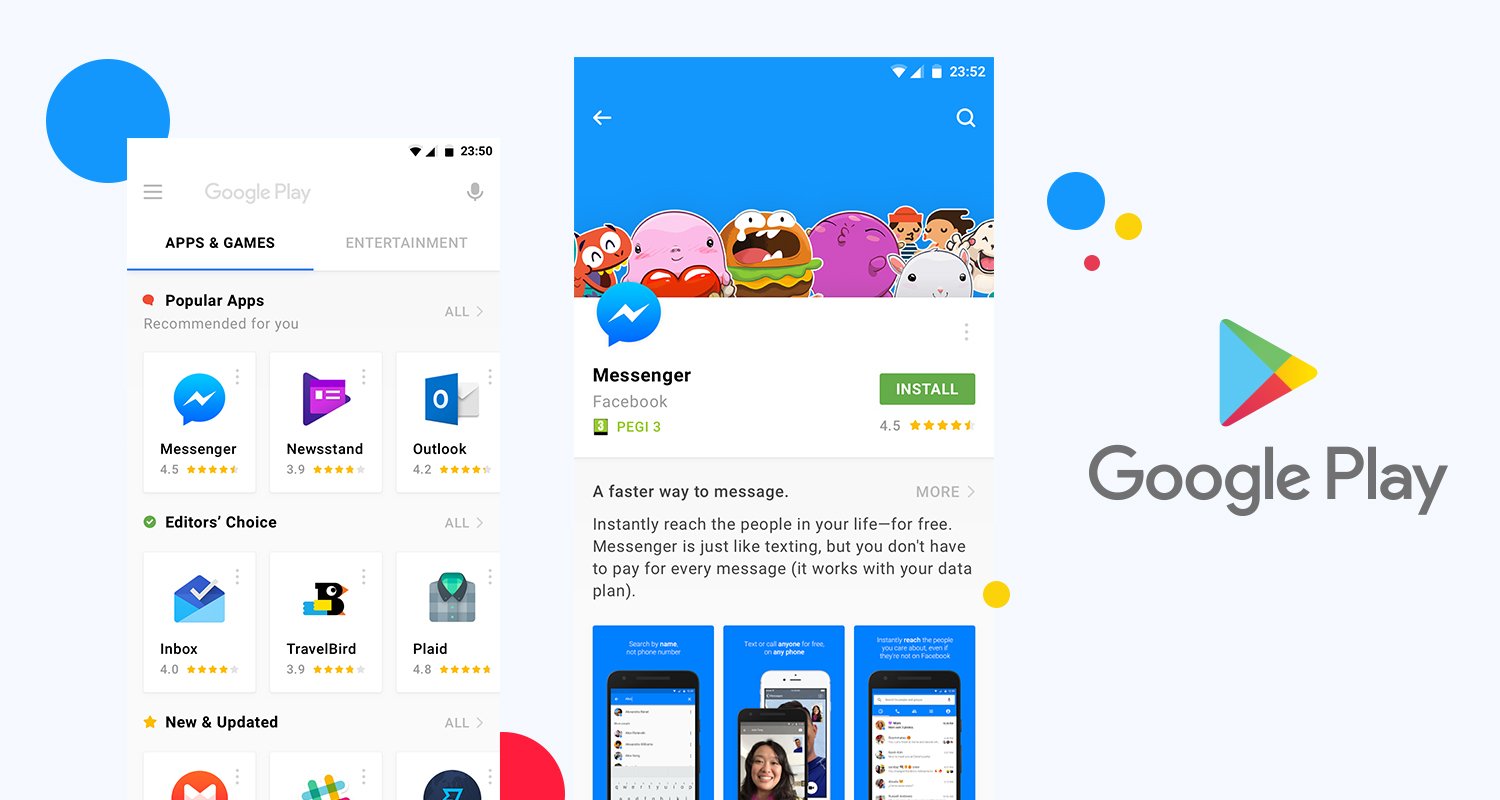In today's digital age, mobile advertising has become an essential tool for businesses to reach and engage with their target audience, and understanding how to effectively maximize your mobile advertising reach through various mobile ad networks is crucial for success.
Related posts
Top Best Action Mobile games 2023 on Google Play and App Store
How to increase App Store reviews and ratings free for App Developers
1. Introduction to Mobile Ad Networks
Mobile ad networks are platforms that connect advertisers with mobile app and website publishers to display ads to their users. Mobile ad networks provide a scalable and cost-effective way to advertise on mobile devices; with the ability to target specific audiences based on factors such as demographics, interests, and behaviors.
In this guide, we will explore the different types of mobile ad networks, best practices for creating effective mobile ad campaigns; and the top mobile ad networks to consider for your advertising needs.
2. Types of Mobile Ad Networks
When it comes to mobile ad networks, there are three main types to consider: in-app ad networks, mobile web ad networks, and hybrid ad networks.
In-App Ad Networks: In-app ad networks focus on delivering ads within mobile apps. These networks allow advertisers to target users based on their app usage and behavior, and they offer a range of ad formats, including banner ads; interstitials, and rewarded video ads. In-app ad networks typically provide high engagement rates since users are already engaged with the app.
Mobile Web Ad Networks: Mobile web ad networks focus on delivering ads on mobile websites. These networks offer a range of ad formats; including banner ads, interstitials, and video ads, and they allow advertisers to target users based on factors such as location and device type. Mobile web ad networks provide a broad reach across a range of websites; but they may have lower engagement rates than in-app ad networks.

Mobile Ad Networks, Source: asoservice.com
Hybrid Ad Networks: Hybrid ad networks combine both in-app and mobile web ad networks. These networks offer a range of ad formats and targeting options, providing advertisers with a comprehensive solution for their mobile advertising needs. Hybrid ad networks can be a cost-effective way to reach a broad audience across multiple channels.
When choosing a mobile ad network, it's essential to consider which type of network aligns with your advertising goals and target audience. For example, if you want to target users who are already engaged with mobile apps, an in-app ad network might be the best choice. Alternatively, if you want to reach a broad audience across multiple mobile websites; a hybrid ad network might be more effective.
3. Best Practices for Mobile Ad Networks
To create effective mobile ad campaigns, it's essential to follow some best practices. Here are a few tips:
Understand Your Target Audience: Understanding your target audience is key to creating effective app downloads. Analyze user behavior data to identify their interests, demographics, and behaviors, and use this it to create targets that resonate with your audience.
Choose the Right Ad Formats: There are several ad formats available in mobile ad networks, including banners, interstitials, and videos. Choose the format that best suits your campaign goals and aligns with your audience's preferences.
Optimize for Mobile: Make sure your ads are optimized for mobile devices. Use responsive design to ensure your ads look great on any screen size and keep your ad copy concise and easy to read on mobile devices.
Test and Iterate: Test your ad campaigns to see what works best and make adjustments accordingly. Split testing different ad formats, targeting options, and ad copy can help you identify what resonates with your audience and optimize your campaigns for maximum performance.
Monitor Performance: Monitor your campaigns regularly and adjust your strategy based on the data. Keep track of key metrics such as conversion rates, click-through rates, and cost per acquisition to ensure you're meeting your advertising goals.
By following these best guides, you can create effective mobile ad campaigns that reach your target audience and drive conversions.
4. Top Mobile Ad Networks
There are many mobile ad networks available, each with its strengths and weaknesses. Here are some of the top mobile ad networks to consider:
Google Ads: Google Ads or Google reviews offers a wide range of targeting options, ad formats, and bidding strategies to help advertisers reach their target audience on mobile devices. It's a great option for businesses of all sizes, with options for both in-app and mobile web advertising.
Facebook Ads: Facebook Ads allows advertisers to targeted audiences based on demographics, interests, and behaviors. It offers a range of ad formats, including video ads, carousel ads, and sponsored posts, making it a versatile platform for mobile advertising.
Unity Ads: Unity Ads is a mobile ad network focused on delivering ads within mobile games. It offers high engagement rates and a range of ad formats, including rewarded video ads that incentivize users to engage with ads.
AdMob: It is a mobile ad network owned by Google that focuses on delivering in-app ads. It offers a range of ad formats, including banner ads, interstitials, and rewarded video ads, and allows advertisers to target specific user segments.
AppLovin: This is a mobile ad network that focuses on delivering in-app ads. It uses machine learning algorithms to optimize ad delivery and offers a range of ad formats, including interstitials, native ads, and video ads.
IronSource: IronSource is a mobile ad network that offers a range of ad formats, including rewarded video ads, interstitials, and banners. It's focused on delivering ads within mobile apps and offers targeting options based on user behavior and interests.
When choosing a mobile ad network, it's essential to consider your advertising goals and target audience. Each ad network has its strengths and weaknesses, and choosing the right which can help you maximize your advertising reach and performance.
5. Mobile Ad Network Integration
Mobile ad network integration refers to the process of integrating a mobile ad network into a mobile app or website to serve ads to users. Here are some key considerations when integrating a mobile ad network:
Choose the Right Ad Network: Consider the ad formats, targeting options, and pricing models of various mobile ad networks to determine which one best aligns with your advertising goals.
SDK Integration: Most mobile ad networks require the integration of a software development kit (SDK) into your mobile app or website. This SDK allows the ad network to serve ads to your users. Ensure that the SDK integration process is smooth and seamless to avoid disrupting the user experience.
Ad Placement: Determine the optimal placement for your ads within your app or website. Consider the ad format and user behavior to determine the best placement for maximum engagement.
Ad Frequency: Determine the optimal frequency for displaying ads to users. Too many ads can be annoying and disruptive, while too few ads may not generate the desired revenue. Experiment with different ad frequencies to find the right balance.
Performance Tracking: Monitor the performance of your ads and adjust your strategy accordingly. Keep track of metrics such as click-through rates, conversion rates, and revenue generated to determine the effectiveness of your ad campaigns.
By integrating a mobile ad network into your app or website, you can monetize your content and generate revenue through advertising. However, it's essential to choose the right ad network and integrate it seamlessly to avoid disrupting the user experience.
6. Metrics and Analytics
Metrics and analytics are essential for measuring the effectiveness of mobile advertising campaigns and optimizing performance. Here are some key metrics and analytics to consider when running mobile advertising campaigns:
- Impressions: The number of times an ad is shown to users.
- Click-through Rate (CTR): The percentage of users who click on an ad after seeing it.
- Cost per Click (CPC): The amount of money paid for each click on an ad.
- Conversion Rate: The percentage of users who take a desired action, such as making a purchase or installing an app, after clicking on an ad.
- Cost per Acquisition (CPA): The amount of money paid for each desired action, such as a purchase or app install.
- Return on Investment (ROI): The amount of revenue generated compared to the amount spent on advertising.
- Audience Demographics: Information about the age, gender, location, and interests of the users who interact with your ads.
- Engagement Metrics: Metrics such as time spent on the site, pages viewed per session, and bounce rate indicate how engaged users are with your content.
It's important to track these metrics and analyze them regularly to optimize ASO for the performance of your mobile advertising campaigns. Consider using tools: Google Analytics or ad network-specific analytics tools to track and analyze your metrics. By optimizing your campaigns based on data-driven insights, you can maximize your advertising reach and generate a higher return on investment.
Conclusion
By following the best practices and utilizing the top mobile ad networks, you can reach a larger audience, optimize performance, and generate a higher return on investment for your mobile advertising campaigns.
Related posts
https://asoservice.com/app-installs-downloads
https://asoservice.com/top-app-keyword-ranking
Thanks so much for reading this article.
Source: https://asoservice.com/












Leave a Reply
Your e-mail address will not be published. Required fields are marked *